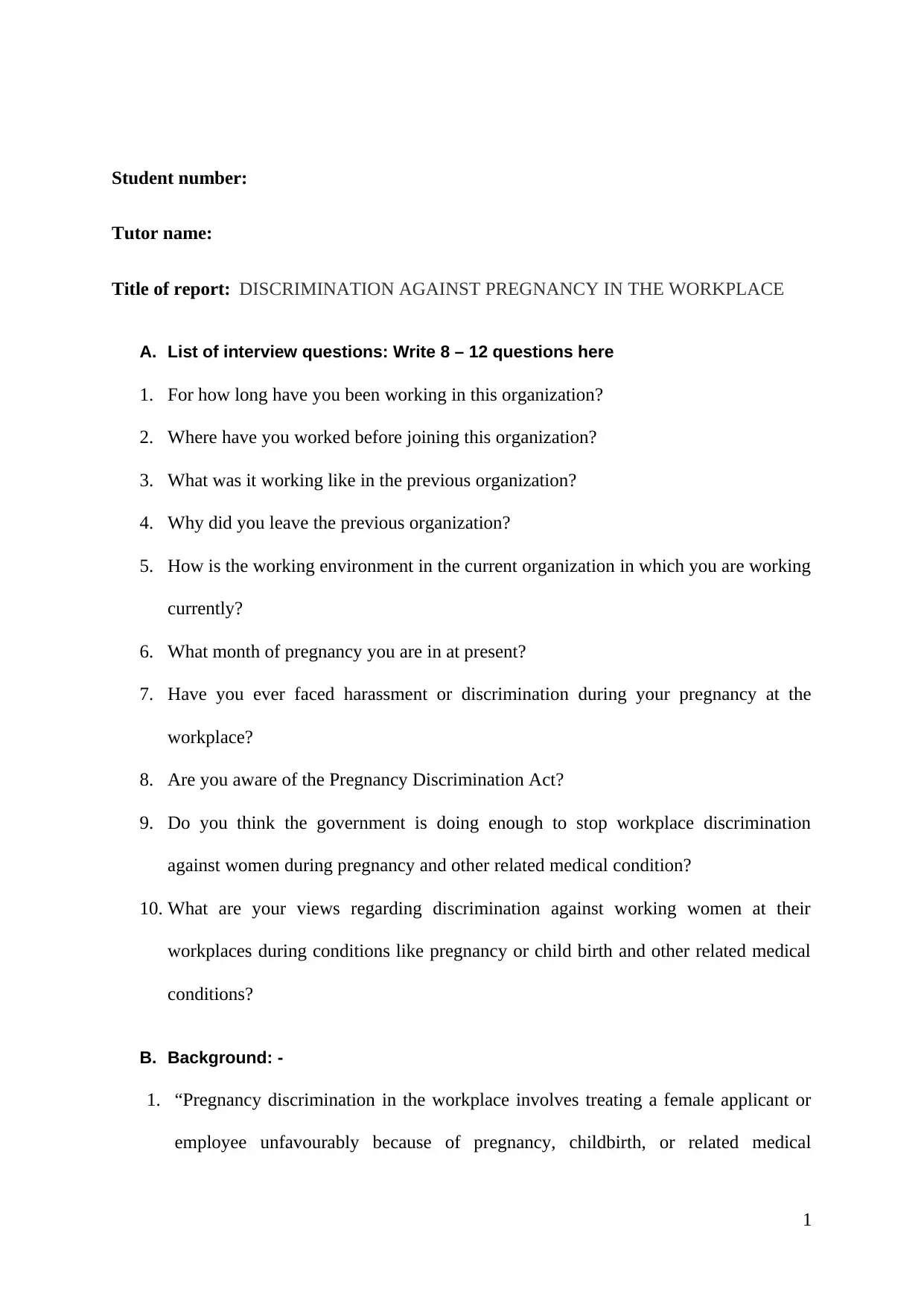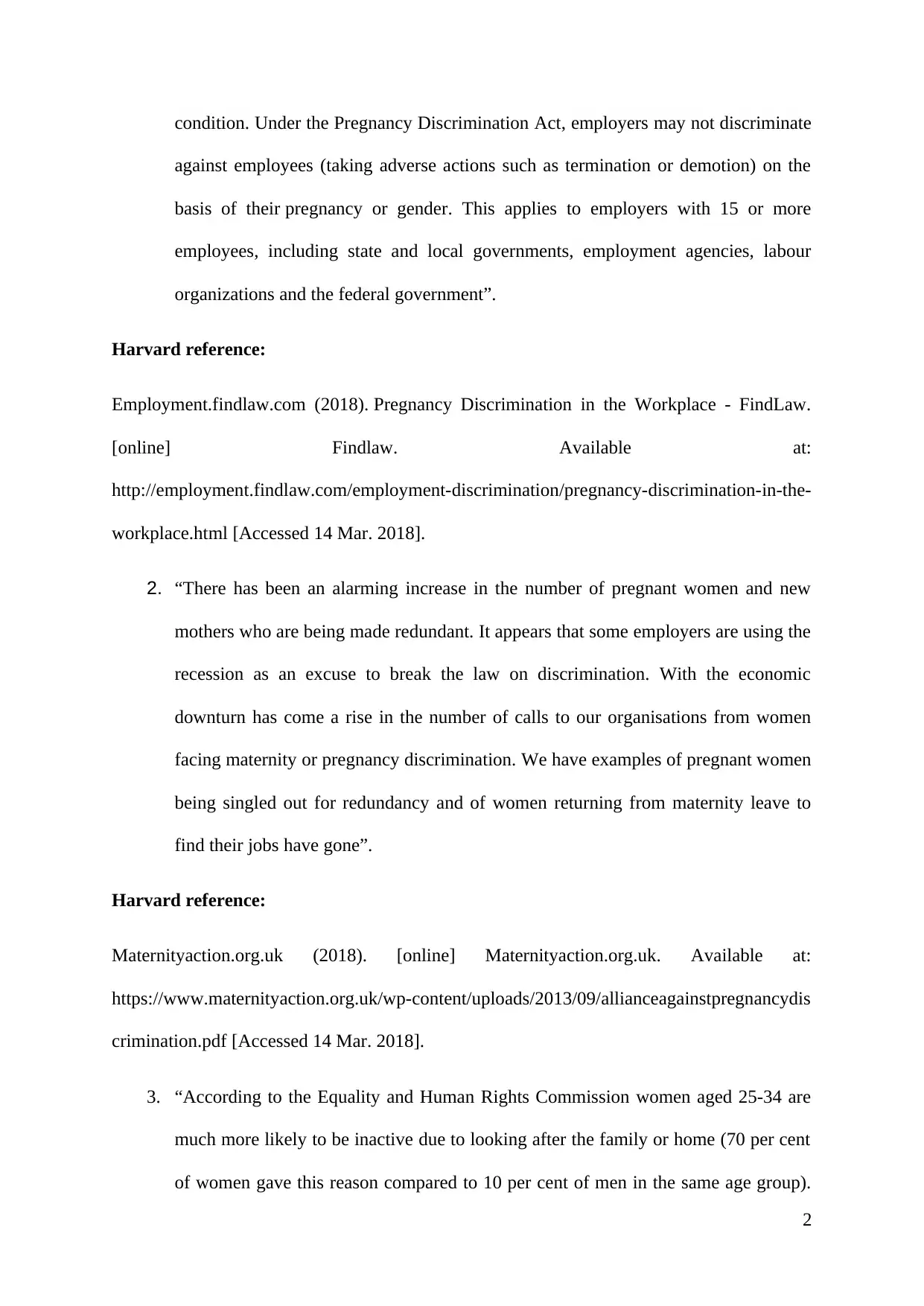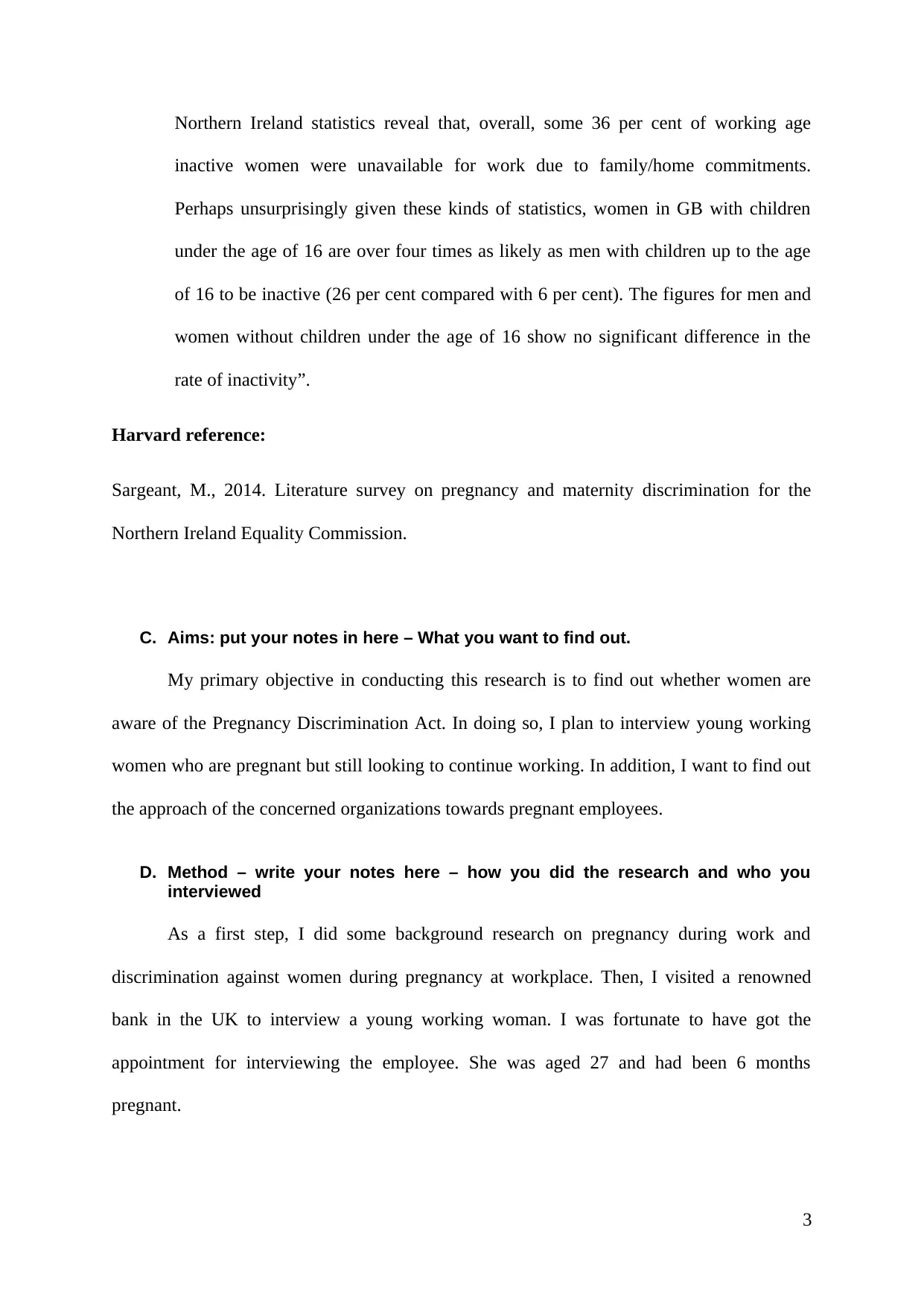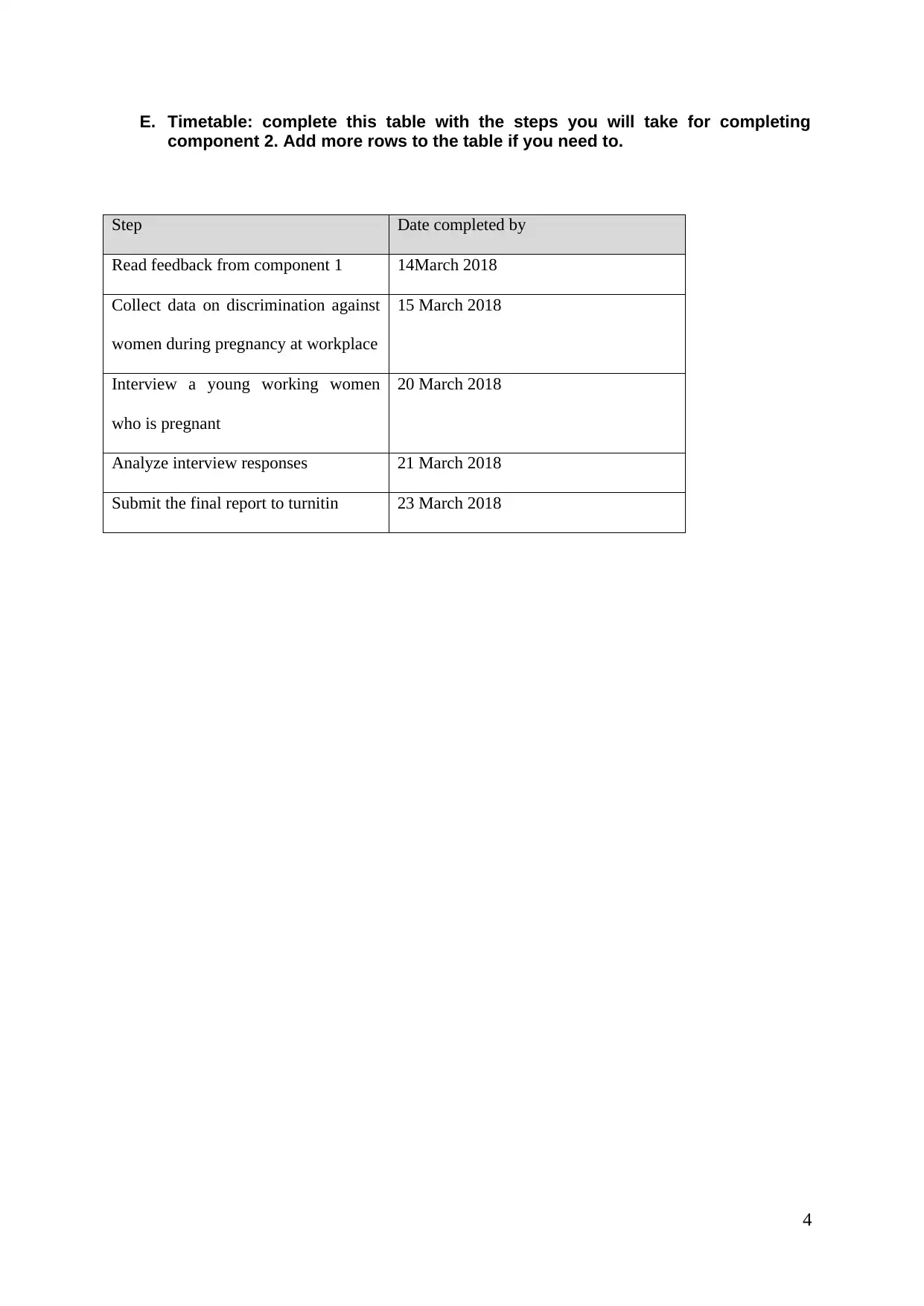Investigating Pregnancy Discrimination in the Workplace: A Report
VerifiedAdded on 2021/04/21
|4
|804
|114
Report
AI Summary
This report investigates pregnancy discrimination in the workplace, focusing on the legal framework and the experiences of pregnant working women. The report includes interview questions designed to explore awareness of the Pregnancy Discrimination Act and perceptions of workplace treatment. Background research covers the Pregnancy Discrimination Act, its implications, and statistics on women's employment and inactivity due to family commitments. The methodology involves background research and an interview with a pregnant employee at a UK bank. A timetable outlines the steps taken, including data collection, the interview, and report submission. The report aims to shed light on the prevalence and impact of pregnancy discrimination, providing insights into employee awareness and organizational approaches to pregnancy in the workplace.
1 out of 4








![[object Object]](/_next/static/media/star-bottom.7253800d.svg)